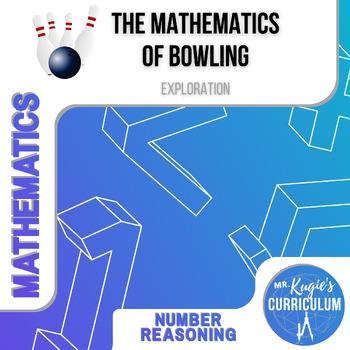The Mathematics of Bowling | Math Exploration
- PDF
Description
PURPOSE:
This inquiry-based exploration offers several opportunities for engaging with a truly real-world application of number reasoning, logic, probability, measures of central tendency, permutations, constructing a mathematical argument, designing an alternative, as well as mathematical computation throughout. Learners will explore the sport of bowling and specifically how it is scored to understand and analyze possible gameplay situations and scoring outcomes. The exploration is centered on the four levels of inquiry (Limited, Structured, Guided, and Open) and offers the facilitator choices for implementation of tasks which fall into each of these categories.
WHAT’S INCLUDED:
This product contains:
✏️ 7 pages of learner explorations divided up into Limited Inquiry, Structured Inquiry, Guided Inquiry, and Open Inquiry categories
✏️ Teacher instructions and lots of suggestions for implementing the explorations
✏️ Mathematics Education Best Practices
✏️ Full Answer Key included for all 7 pages of activities
✏️ Opportunity for extension or further exploration
STORY:
I really have appreciated my time working at an International Baccalaureate (I.B.) school. I have developed a deeper understanding and appreciation for creating explorations for learners that are rooted in inquiry. This year, I thought of a great end-of-year exploration of the sport of bowling and how it is scored to keep learners engaged and applying the mathematics from the year.
POSSIBLE EXTENSIONS:
Encourage early finishers to continue digging into the concepts and topics presented in this exploration on their own. Utilize the Open Inquiry activity on page 11.
MATERIALS/PRE-REQS:
Besides this file, you may require:
✏️ Computer with internet access
✏️ Grid paper for drafting more bowling scorecards
*********************************************************************
RELATED INNOVATIONS from Mr. Kugie’s Curriculum
Categories:
Products:
☆ Real-to-Life Classroom Economy System | Math Class Structure
☆ The $100 Mall Visit | Math Exploration
☆ The Game of Life | Math Exploration
☆ Egyptian Fractions | Math Challenge
*********************************************************************





